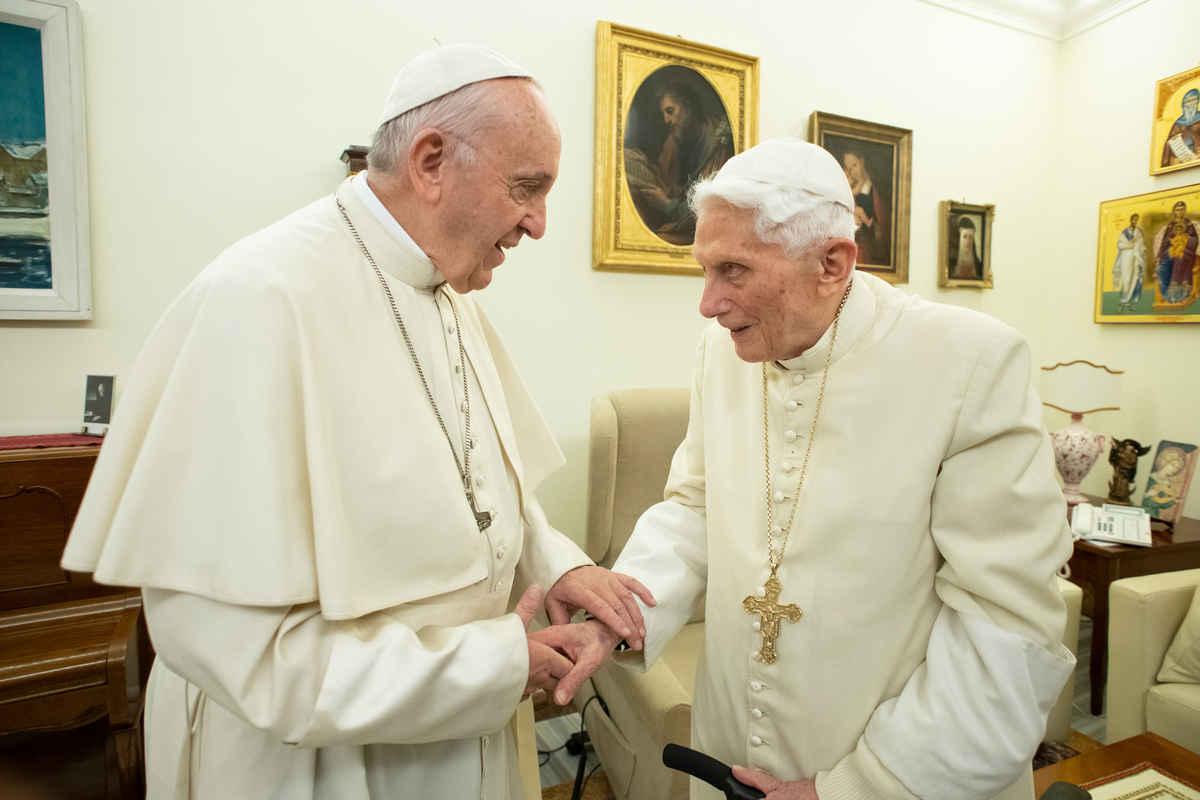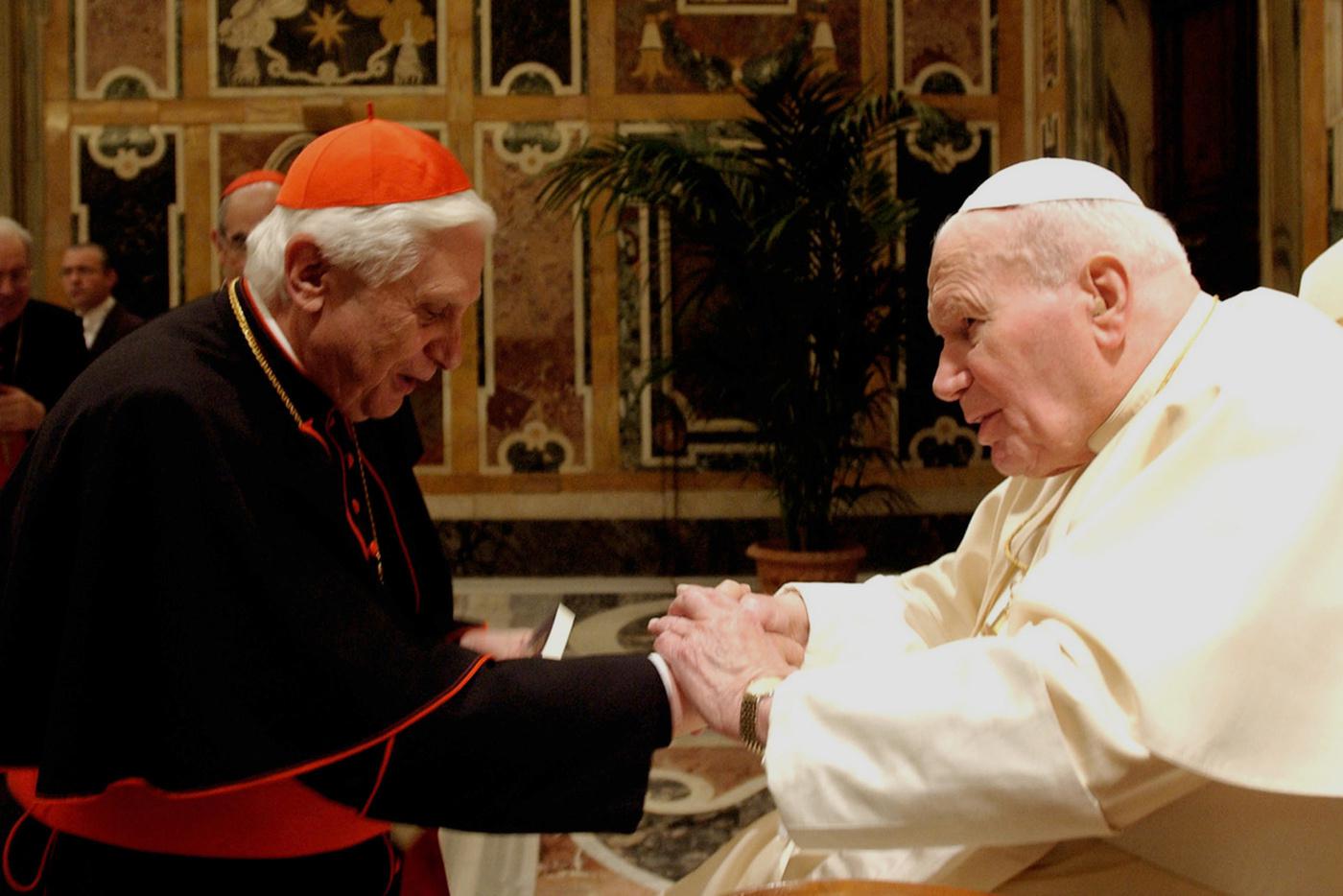|
Breaking down some key distinctions in Benedict's abuse crisis diagnosis
By John L. Allen Jr.
After remaining notable mostly for his invisibility the last six years, Pope Emeritus Benedict XVI made up for it in a big way April 10 by publishing a 6,000-word analysis of the clerical sexual abuse scandals in an obscure magazine for clergy in his native German region of Bavaria. The retired pope’s analysis is typically multilayered, and his main focus is why the path to recovery from the crisis has to run through stronger faith in God and a deeper personal encounter with Christ. His diagnosis is that only a Church rooted in Christ, including his real presence in the Eucharist, will have the spiritual wherewithal to begin putting the pieces back together. The cause of the firestorm the essay has created, however, can be expressed far more simply, requiring just one word: homosexuality. Benedict asserts that the sexual revolution of the 1960s and a collapse in Catholic moral theology following the Second Vatican Council (1962-65) form a key part of the background to the abuse scandals. As part of that picture, he writes, bishops in some cases “sought to bring about a kind of new, modern” Catholicism, leading, among other things, to the formation of “homosexual cliques” in seminaries and to pedophilia being “diagnosed as allowed and appropriate.” By so doing, Benedict came off in some quarters as lending legitimacy to the idea that being gay somehow predisposes one to be a pedophile, thus triggering accusations that he’s fostering an ugly and embarrassing form of homophobia. Before considering that critique, let’s dispense with a couple of preliminaries. First, critics also have faulted Benedict for “chastising” or “rebuking” Francis, acting in a disrespectful and divisive fashion. That’s fairly easy to bat down. Benedict sought permission both from Francis and from Italian Cardinal Pietro Parolin, the Vatican’s secretary of state, prior to agreeing to publish his thoughts, so there’s clearly no failure of respect. As for the rest, since when is having something different to say ipso facto “divisive”? Second, critics have pointed to a major lacuna in Benedict’s argument. While he extols Saint John Paul II for defending absolute moral norms in his 1993 encyclical “Veritatis Splendor” (“The Splendor of Truth”), he fails to mention that several figures we now know to have been notorious abusers were protected and promoted on John Paul’s watch, such as Mexican Father Marcial Maciel Degollado, founder of the Legion of Christ, and ex-cardinal and now ex-priest Theodore McCarrick. That’s a completely fair point, and it will weigh heavily in all future evaluations of John Paul’s legacy. For what it’s worth, however, when the abuse scandals began to explode in the late John Paul years, the climate at senior levels in the Vatican was dominated by denial and defensiveness. The lone exception was then-Cardinal Joseph Ratzinger, who was the champion of the reform caucus, among other things successful pushing for expedited procedures to defrock abuser priests. In other words, whatever the failures of John Paul on the abuse scandals, you can’t really lay them at Benedict’s feet. Now for the central plank in the indictment: Has Benedict fueled homophobia? Here’s the thing: Moral disapproval of homosexuality, or even a personal dislike of gays (not that such is the case with Benedict), are not the only reasons that might motivate someone to believe that examining the “homosexual cliques” Benedict describes ought to be part of the analysis. Let’s stipulate that a gay person is no more likely to abuse than anyone else. What no one seems to have acknowledged is that this premise actually makes it more puzzling, not less, that in the John Jay study and virtually every statistical analysis to date, a strong majority of priest abuse cases are male-on-male. If homosexuals were somehow predisposed to abuse, that result wouldn’t be surprising. It’s precisely the fact that’s not so, which demands another explanation. In a sense, the key word in Benedict’s formula probably isn’t “homosexual” but “cliques.” The question is what was going on in seminary and priestly culture in the 1970s and ’80s, in which clergy with things to hide — whether those skeletons in the closet were sexual, financial, related to substance abuse, or whatever else — may have found refuge and protection? The possibility that in that era a good share of those priests were gay doesn’t mean there’s a problem with homosexuality, but it does mean the nature of whatever gay subculture existed in the priesthood is worth considering. Whatever the answer may be, the mere fact of raising the question doesn’t seem automatically tantamount to homophobia. Of course, it distorts Benedict’s complex contribution to put the focus entirely on this subject. Arguably at least as important, for instance, is his discussion of “guarantorism” and the role an exaggerated emphasis on the due process rights of the accused in canon law may have played in delaying an adequate response in the late 1990s and early 2000s. However, sometimes the only way out of a situation is straight through. Today, media outlets around the world are reporting that Benedict has linked homosexuality with pedophilia, and that can’t be ignored. The best analytical take would appear to be this: There’s an important distinction between calling for consideration of homosexuality, and for saying “homosexual cliques” in seminaries at a specific moment in time are worth examining. The first is about sexual orientation, the second is about culture — and, in that distinction lies a world of difference.
|
.
Any original material on these pages is copyright © BishopAccountability.org 2004. Reproduce freely with attribution.

